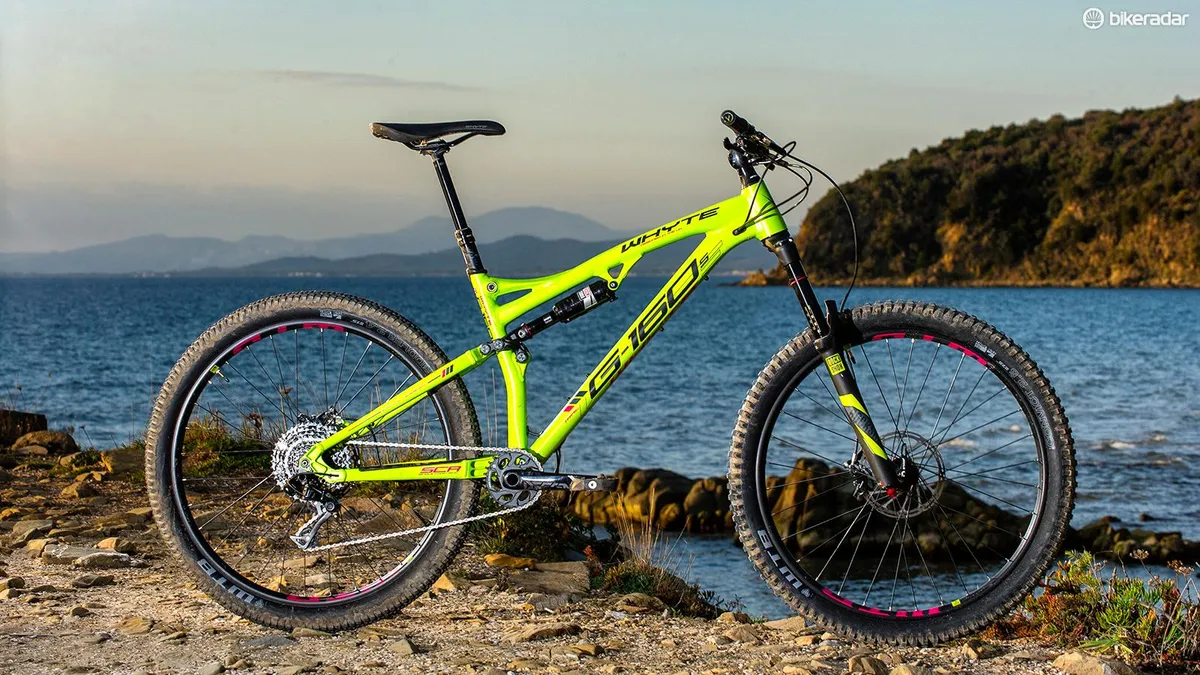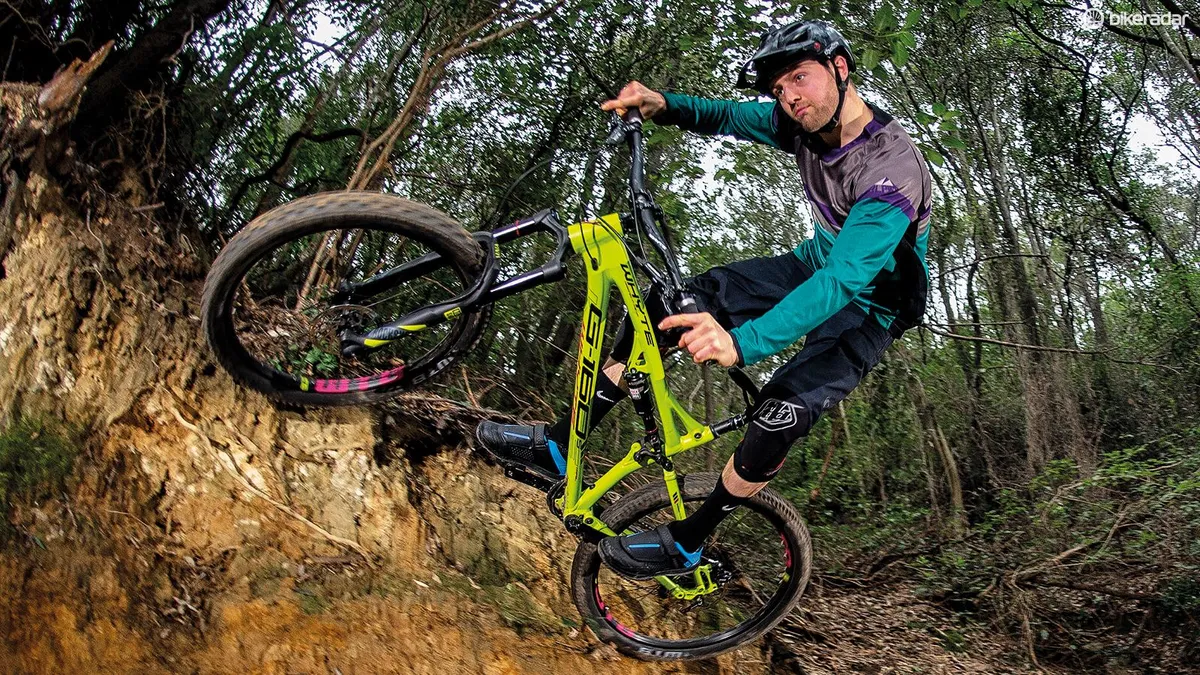Whyte’s UK based design team isn’t afraid of pushing limits when it comes to geometry and certainly knows what works and what doesn’t when it comes to components. But just how well does the G-160 S stack up on the trail?
Even before you get your tape measure out, it’s pretty obvious that the G-160 is long. The reach on our medium test bike is 479mm, making it one of the longest out there. In fact, even in this size, it’s still longer than many other bikes' large and extra-large offerings, which really is quite something. In contrast, the other measurements are a little less radical and closer to other bikes in this category. A 65.5-degree head angle is certainly still slack enough for attacking the steeper stuff though and to further bolster stability and corner confidence the low 332mm bottom bracket is very much a welcome addition.
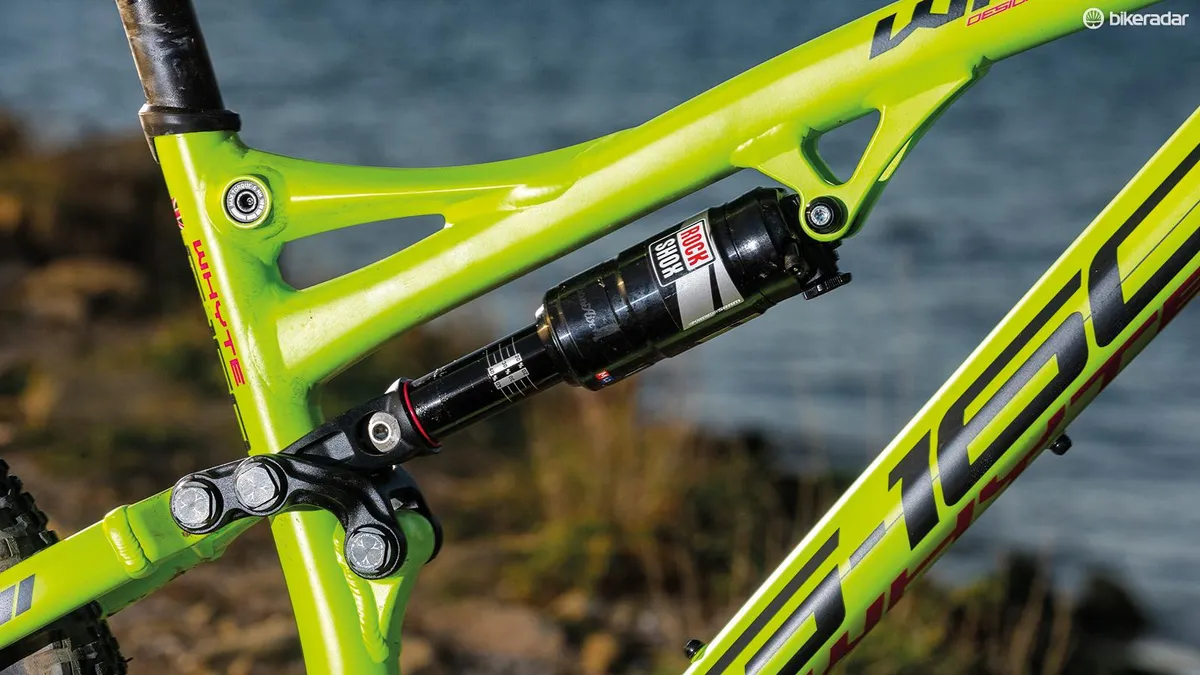
Whyte was one of the first companies to offer bikes dedicated to 1x gearing set ups, so if you’re looking for a hard hitting trail bike that will accept multiple chainrings, you’ll need to keep on looking as the G-160 has no provision to bolt a front mech in place. The rear end uses a Horst Link suspension system with Boost 148mm axle spacing and, in the case of the G-160 S, a RockShox Monarch R DebonAir shock to keep things under control.Neat features include the sleek seat clamp, rattle-free internal routing and space to fit a bottle cage.
Testing Bike of the Year contender the Whyte G-160 S
Whyte G-160 S kit
While Whyte might not have the same sort of budget to blow on parts as its direct buy competitors, it has spent its money wisely and put together a very cohesive spec.
Its own brand 780mm bar and 40mm stem are fine examples of this. While not all of our test team was totally sold on the feel of the 35mm bar clamp diameter, we had no grumbles about it on the Whyte. The bar offers plenty of leverage and can easily be chopped down if it feels a touch too wide, while the 40mm stem keeps the steering lively and reactive.
As this is the cheapest bike in the three bike G-160 line up, Whyte offers this particular build with the RockShox Yari fork, rather than the full bells and whistles Lyrik, which although a solid performer still isn’t quite a match for its pricier counterpart.
Wide WTB i29 rims wrapped in WTB rubber finishes things off nicely, adding some well-supported and predictable grip when it counts.
Whyte G-160 S ride
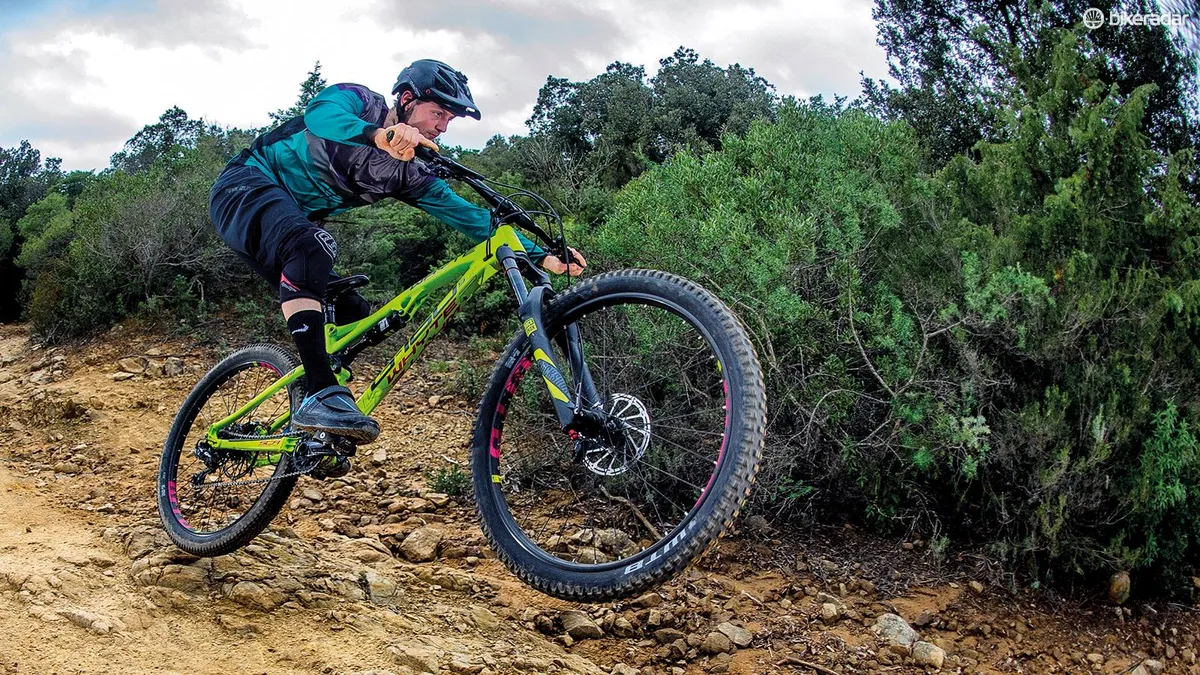
From the moment you drop into the first trail, it’s obvious that the G-160 S is a serious bit of kit. The position that the rangy, well-proportioned geometry puts you in encourages you to simply keep going faster. There’s stability when it counts, but no lack of agility when you do need to sling it through the turns. Yes, the longer reach figure needs some time to adapt to, but once you’re a run or two in the shape in general, including that stumpy chainstay, just feels really good.
Although Whyte has used the lighter casing option, the wide rim helps to support the tyre well
At 14.56kg it’s no rocket ship on the climbs, but there’s more than enough stretch in the effective top tube (which measures a lengthy 637mm) to keep you weighting the front as you spin up technical climbs.In really chattery, high speed sections, the less refined Motion Control Damper used in the Yari fork does become noticeable when compared on back-to-back runs with the more expensive Lyrik, which gets the highly acclaimed Charger Damper.
The Yari doesn’t quite offer the same level of support as the Lyrik and requires a little more air pressure to keep it propped up, which does cause a little more buzz through the bars.
High fives to Whyte though for choosing to spec the broad i29 rims and the massive 2.5in Convict front tyre, which help to negate this issue. The high volume tyre helps to take the edge off of some of the chatter and lessen the vibration through your hands.
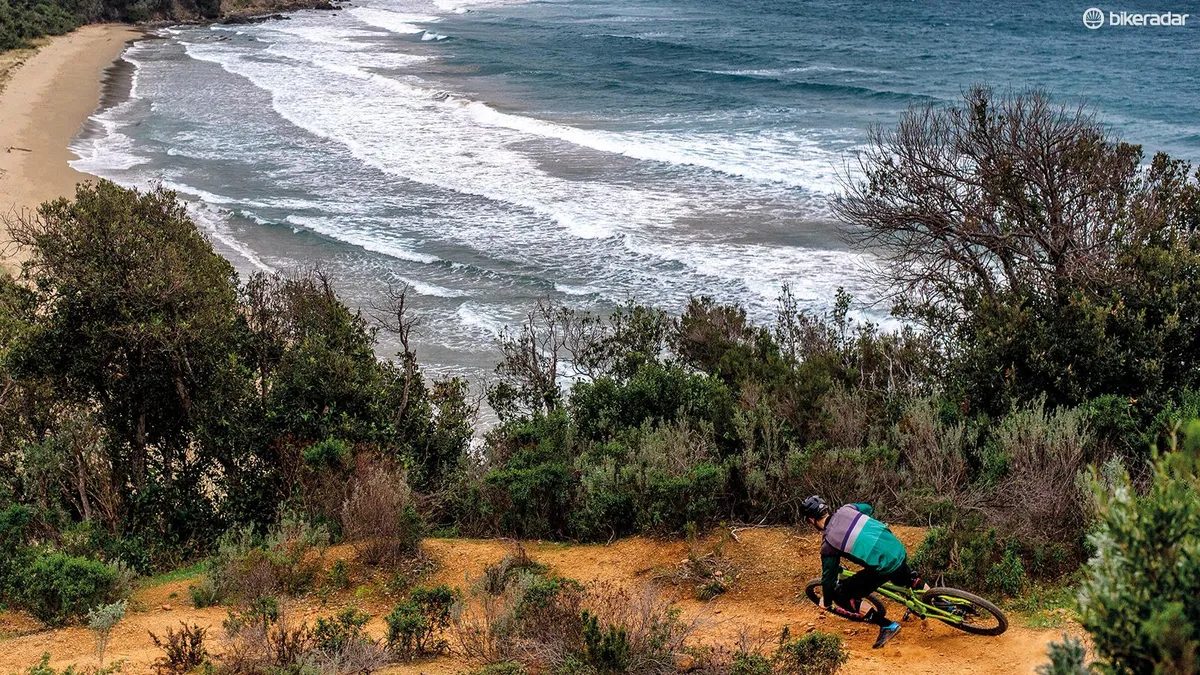
Although Whyte has used the lighter casing option, the wide rim helps to support the tyre well and we had no issues with front wheel squirm when stoving the G-160 into high load, fast turns. It does use WTB’s High Grip compound though which works well across wet roots and rocks. If you’re stuck riding muddy trails for the most part of the year we’d consider switching the low-profile rear tyre out for something with a little more bite as the Riddler isn’t the best in the slop.
The low bottom bracket helps with confidence through the turns but you’ll need to get used to timing you pedal strokes on particularly lumpy climbs to avoid rock strikes. Once perfected though, we loved just how low slung the G-160 felt.
It was only really the rear suspension that caused us any issues. In stock form, it simply didn’t feel as well supported as we’d have hoped. Take the time to add some volume bands (we slotted four in in the end) and things do feel a little better, though still not quite perfect. OK, we’re being picky here and, for the most part, once fettled, the G-160 certainly doesn’t feel held back, but the rear end doesn’t feel quite as composed as some of its counterparts when you really get trucking into particularly ugly terrain.
Overall though, the G-160 S is a great bike, providing you take the time to work on the shock. Its shape oozes stability and confidence and truly comes to life when riding steep, technical terrain or flat-out fast trails, and although the spec might not be the most drool worthy around, it’s still bloody good and does exactly what it’s supposed to do.
